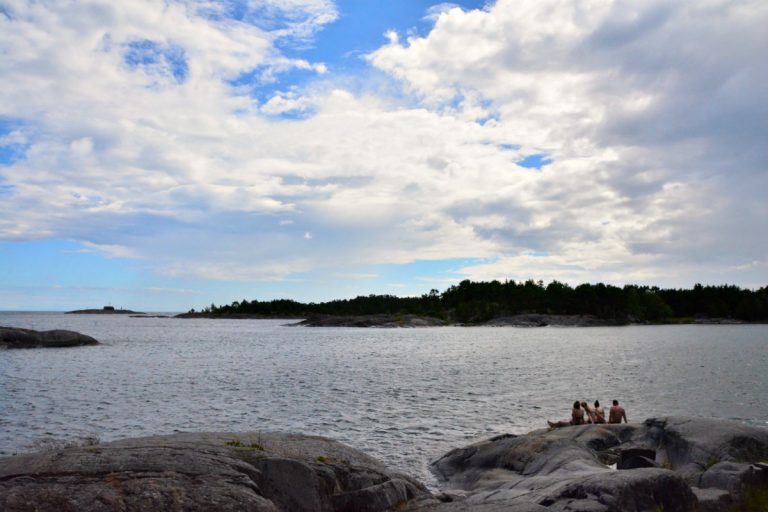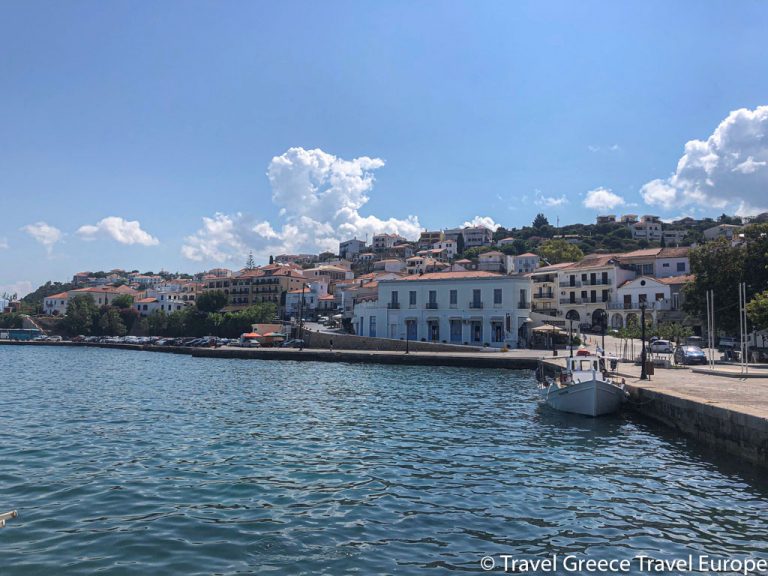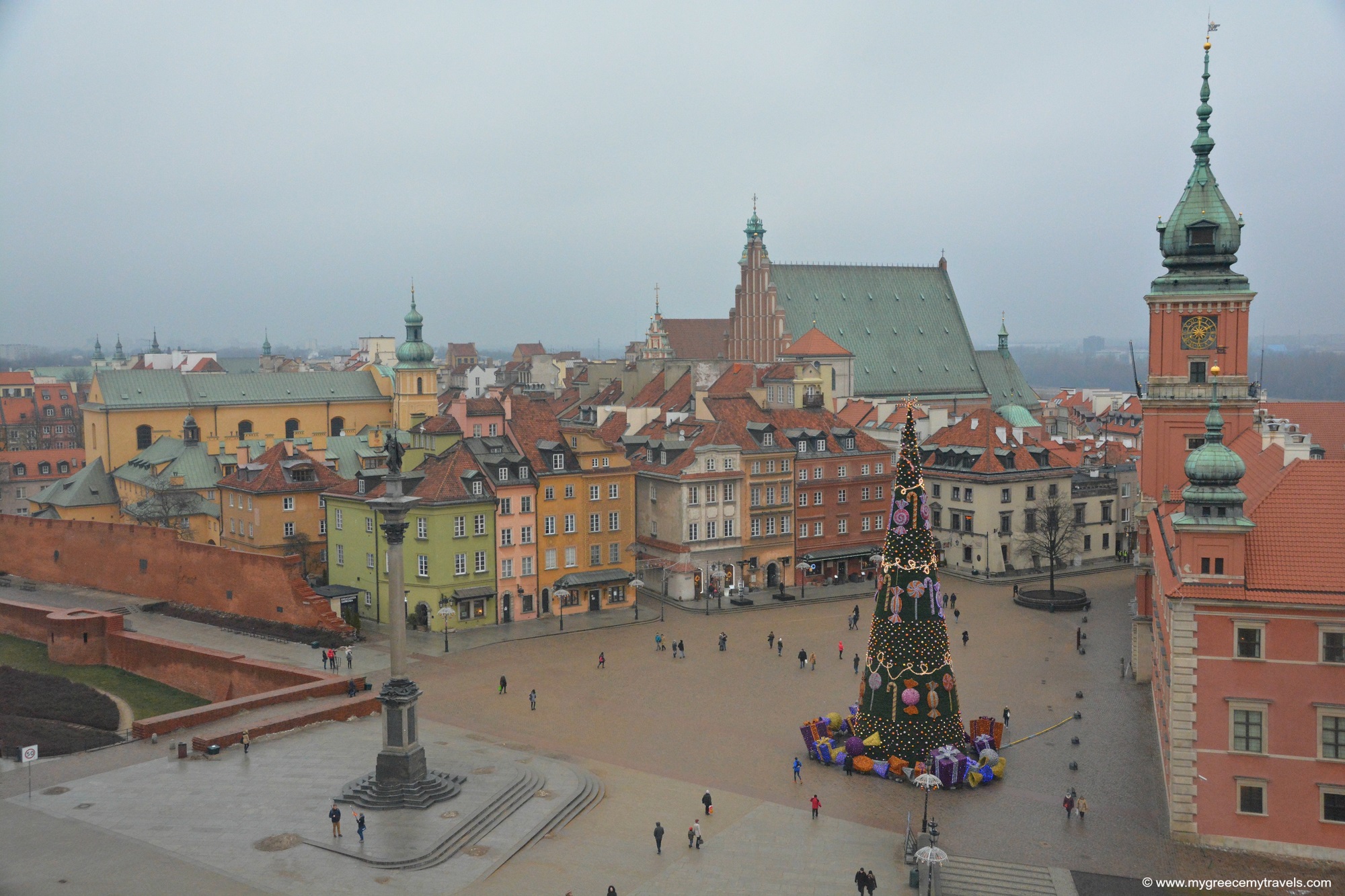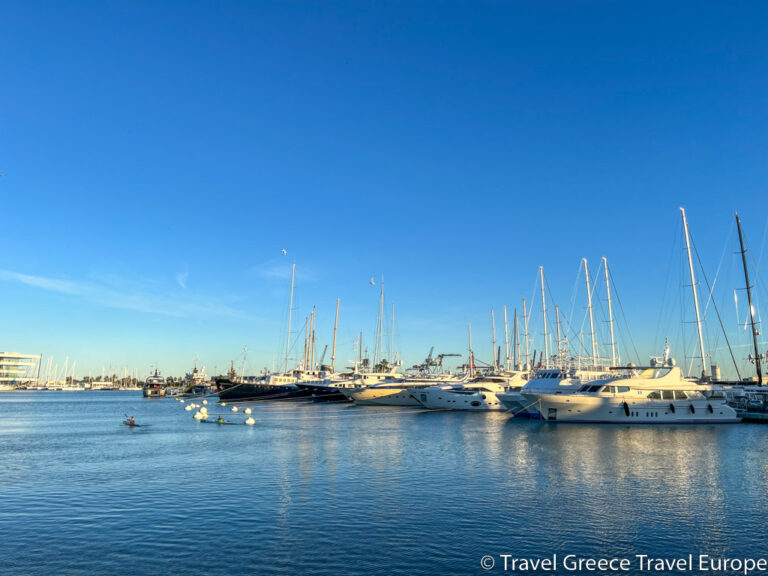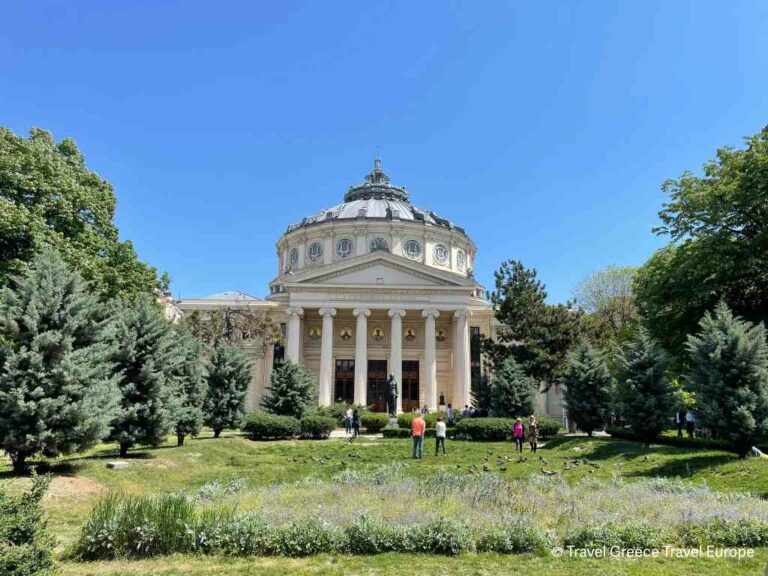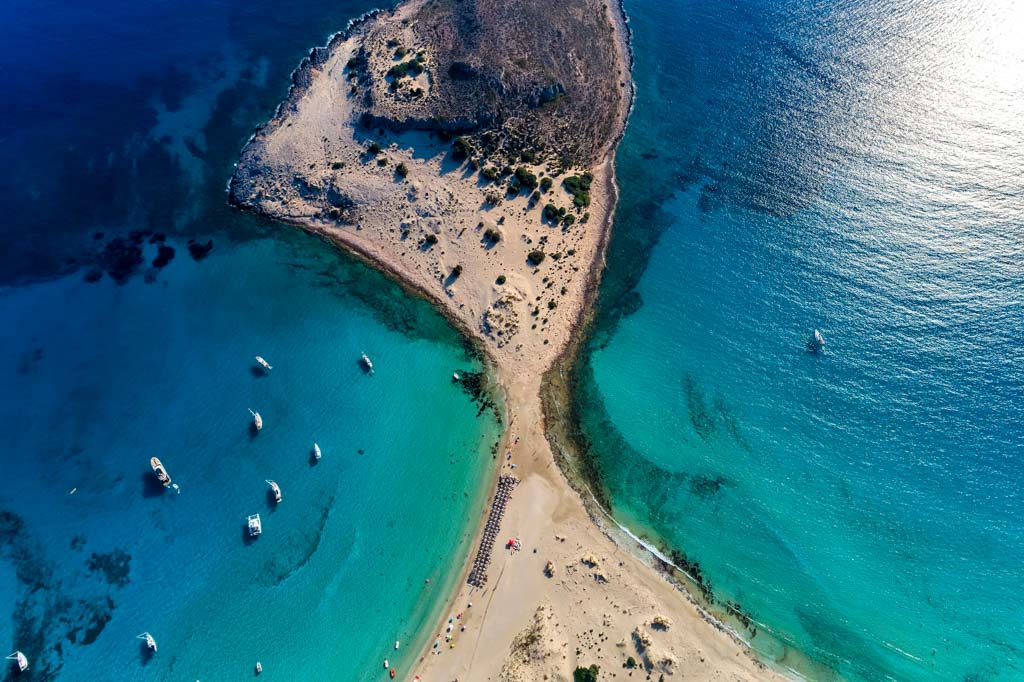Discover Nuremberg in 2 Days:History, Food, and Culture
Nuremberg is a city where its rich, turbulent history seamlessly blends with a vibrant modern atmosphere, making it the perfect destination for a quick and unforgettable getaway. Located in the heart of Bavaria, Germany, Nuremberg is well known for its pivotal role in shaping European history, particularly during the Middle Ages and WWII. But beyond its historical importance, Nuremberg is also a culinary haven, offering traditional Franconian delights and famous regional specialties like Nürnberger sausages and gingerbread. Whether you’re a history buff eager to explore WWII sites, a foodie ready to savor local delicacies, or a family in search of cultural and fun attractions, Nuremberg packs plenty to do in just two days. In this guide, I’ll take you through an itinerary that covers the city’s historical landmarks, a food tour, and a visit to one of Europe’s most famous toy museums.
Where is Nuremberg and How to Get There?
Nuremberg is located in southern Germany in the state of Bavaria, about 170 kilometers north of Munich. As the second-largest city in Bavaria, it serves as a major cultural and economic hub in the region. Situated along the Pegnitz River, Nuremberg’s strategic location has historically made it a crossroads for trade, culture, and innovation.
Accessibility:
Getting to Nuremberg is easy thanks to its excellent transportation links.
- By Air: Nuremberg Airport (Flughafen Nürnberg) is an international airport with connections to many European cities. It is just a short metro ride from the city center, making it a convenient option for international travelers.
- By Train: Nuremberg is a key stop on Germany’s Deutsche Bahn network, offering high-speed ICE trains to cities like Munich, Frankfurt, and Berlin. You can reach Nuremberg from Munich in about 1 hour and from Frankfurt in roughly 2 hours, making it an ideal stop on a broader German tour.
- By Car: If you’re on a road trip, Nuremberg is well-connected by several major autobahns, including the A3 (connecting Frankfurt to Austria), A6, and A9 (connecting Berlin to Munich). Renting a car allows for flexibility, especially if you plan to explore the surrounding Bavarian countryside.
Once in Nuremberg, getting around is hassle-free thanks to its efficient public transportation system, which includes trams, buses, and an underground (U-Bahn) network. However, most of the city’s key attractions are concentrated in and around the Altstadt (Old Town), which as I experienced is best explored on foot.
What Makes Nuremberg Special?
Nuremberg stands out as one of Germany’s most culturally and historically significant cities. From its medieval roots to its complex involvement in WWII, the city offers a fascinating blend of the old and the new. Below are a few reasons why Nuremberg is so special:
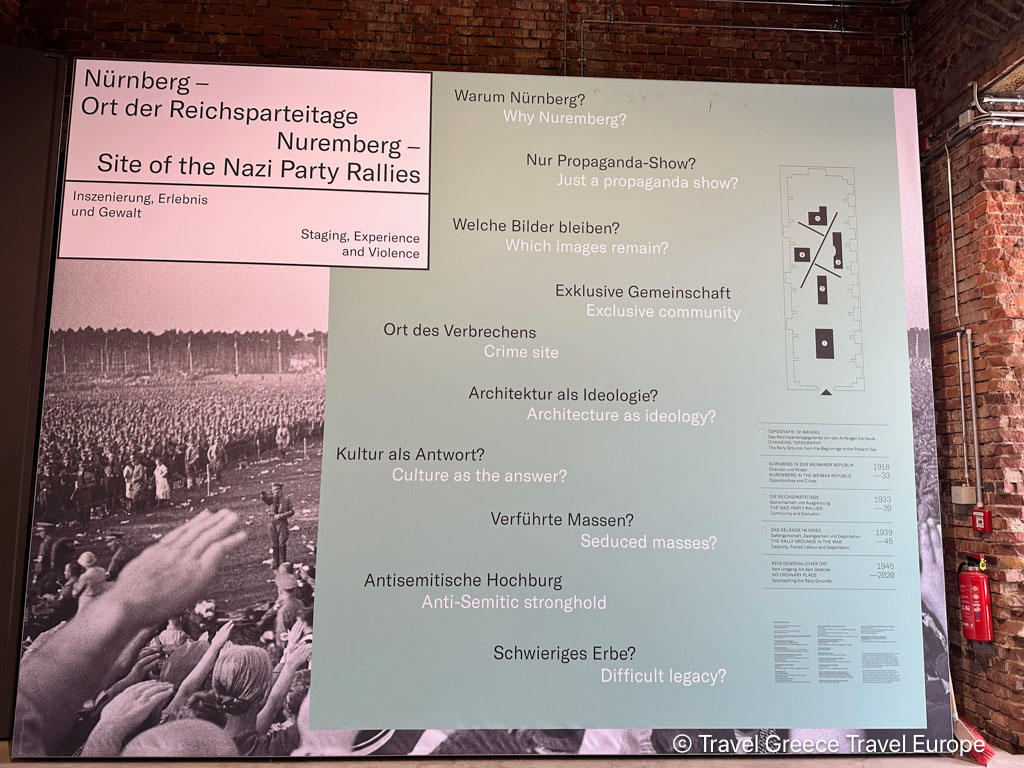
Historical Importance
Nuremberg’s history dates back over 1,000 years, and much of this history is still visible today in its well-preserved medieval architecture. The city played a significant role during the Holy Roman Empire, serving as an important hub for trade, governance, and culture in the Middle Ages. The Nuremberg Castle, perched above the city, once served as a key imperial residence, symbolizing the city’s power and prestige.
In more recent history, Nuremberg is best known for its association with WWII. The city was chosen as the site of the infamous Nazi Party Rallies, and after the war, it hosted the Nuremberg Trials, where Nazi leaders were prosecuted for war crimes. Today you can explore these significant moments in history at sites like the Nazi Party Rally Grounds and the Memorium Nuremberg Trials. I do however advise joining an organized group tour in order to get a proper introduction to these historically important events.
Cultural Heritage
Nuremberg has long been a center of German culture, particularly during the Renaissance. The famous artist Albrecht Dürer was born and lived here, and his legacy continues to shape the city’s cultural identity. You can visit the Albrecht Dürer House, a museum dedicated to his life and work, to gain insight into one of the most influential figures of the German Renaissance.
Nuremberg’s Old Town is dotted with cultural landmarks, with its half-timbered houses, Gothic churches, and charming market squares. The Christkindlesmarkt, one of Europe’s most famous Christmas markets, draws visitors from all over the world each December to experience traditional German holiday customs.
Food Culture
Nuremberg’s culinary scene is another key part of its identity. The city is famous for its Nürnberger bratwurst, small, thin sausages grilled over an open flame and typically served with sauerkraut and mustard. These sausages are protected by EU law, meaning they can only be made in Nuremberg following a traditional recipe.

Another specialty is Lebkuchen, a type of gingerbread that has been produced in the city for centuries. Available in various flavors, from classic spiced to chocolate-covered, Lebkuchen is a popular treat, especially during the Christmas season.
Nuremberg’s rich history of beer brewing also plays a key role in its food culture. Franconian beer is highly regarded throughout Germany, and visitors can sample a variety of local brews in the city’s traditional beer gardens and taverns.
Discover Nuremberg in 2 Days: things to See & Do
Day 1 in Nuremberg: Exploring History and Culture
On your first day in Nuremberg, I would advise to start your day by diving into the city’s important role during WWII, since the specialized tours usually start in the morning. You can explore the key historical sites related to the Nazi regime and the Nuremberg Trials on your own but for the best experience you can book this small group tour which I joined. In the afternoon you will have plenty of time to discover Nuremberg’s medieval past by visiting the Old Town and Nuremberg Castle.


Start your day with a visit to the Documentation Center Nazi Party Rally Grounds (Dokumentationszentrum Reichsparteitagsgelände). This museum, located in the abandoned Congress Hall (The Kongresshalle), provides a deep and often sobering look into how the Nazi Party used Nuremberg as a platform for their rise to power. The permanent exhibition, titled Fascination and Terror, covers the origins and rise of the Nazi regime, as well as the consequences of their rule during WWII. Walking through this massive site gives a haunting perspective on how propaganda and large-scale rallies fueled Nazi ideology.

The Kongresshalle (Congress Hall) was designed in 1935 to hold 50,000 people for Nazi propaganda events. Modeled after the Roman Colosseum, the U-shaped building is made of red brick, measuring 250 meters long and 39 meters high, though construction was halted due to WWII. The Kongresshalle serves as a powerful symbol of the grand ambitions of the Third Reich and is a key stop on WWII history tours in Nuremberg.

On the WWII History Tour you will get to visit the Zeppelin Field, where Adolf Hitler gave his infamous speeches to massive crowds during the Nazi Party Rallies, and the Great Street, designed as a monumental axis for the Nazi rallies. The scale of these structures is truly staggering, providing a chilling reminder of the impact of Nazi propaganda.




Your next stop is the Memorium Nuremberg Trials, located in the Palace of Justice. This historic courtroom, where top Nazi officials were tried for war crimes after the war, marks a pivotal moment in world history. The trials not only brought justice to war criminals but also set important precedents for international law. The exhibition offers detailed insights into the proceedings, the significance of the trials, and how they shaped the future of human rights law. Kindly note that the Memorium Nuremberg Trials are closed on Tuesdays, therefore plan you visit accordingly.

Afternoon: Exploring Nuremberg’s Medieval Old Town
After a morning focused on WWII history, head back to Nuremberg’s Old Town (Altstadt) for a leisurely afternoon immersed in medieval history and culture. The Old Town is a blend of half-timbered houses, cobblestone streets, and historical landmarks that showcase Nuremberg’s rich past. You might also like to join this 2-hour Nuremberg Old Town Walking Tour in English

Your first stop in the Old Town should be the Nuremberg Castle (Kaiserburg), one of the most important imperial fortresses in Europe. Perched on a hill overlooking the city, the castle offers breathtaking views and is a symbol of Nuremberg’s medieval power and influence. Explore the courtyards, visit the castle’s museum to learn about its history, and don’t miss the chance to walk along the castle walls.
Walking the City Walls
Nuremberg’s Old Town is encircled by a remarkable system of medieval city walls, originally built in the 12th century and expanded over time. Much of the walls still stand today, offering visitors the chance to walk along sections of this historical fortification. The walls stretch for about 4 kilometers around the city, and several well-preserved towers and gates can be explored along the way.

- Where to Start: One of the best places to start your walk is near the Nuremberg Castle, where you can ascend to the ramparts and enjoy panoramic views of the Old Town below. From here, you can stroll along the fortified walls toward Tiergärtnertor, a picturesque gate next to the Albrecht Dürer House.
- What to See: As you walk along the walls, you’ll pass several ancient towers, such as the Laufer Schlagturm and the Fünfeckturm (Five-Cornered Tower), each offering unique insights into medieval fortifications. You’ll also get great views of Nuremberg’s rooftops, spires, and gardens from various points along the wall.
- Additional Highlights: The best-preserved sections of the walls are near the Frauentor (Women’s Gate) and Königstor (King’s Gate), close to the main train station. These areas also feature remnants of the old moat and fortified towers. Walking along the walls offers a peaceful escape from the bustling city streets below and provides a unique way to experience Nuremberg’s medieval architecture.
From the castle you can then make your way to the Albrecht Dürer House, the former home of the famous German Renaissance artist. The museum gives a fascinating glimpse into Dürer’s life and work, showcasing his contributions to European art and his influence on the Renaissance movement. The house also offers insight into life in Nuremberg during the 16th century.
Take a break at the Hauptmarkt, the main square in the Old Town, home to the Schöner Brunnen (Beautiful Fountain). This intricately designed 14th-century fountain is one of Nuremberg’s iconic landmarks, and according to local legend, turning the fountain’s golden ring will bring good luck, so be sure to give it a try!
The square also hosts the famous Christkindlesmarkt during the holiday season, one of Europe’s largest and most festive Christmas markets (29.11 – 24.12.2024), transforming the area into a winter wonderland filled with stalls selling handcrafted gifts, mulled wine, and local delicacies. You might enjoy booking this Nuremberg Christmas Magic 3-Hour Christkindlesmarkt Walking Tour

Just next to the Hauptmarkt is the impressive St. Lorenz Church (Lorenzkirche), one of the most important Gothic churches in Nuremberg. Built in the 13th century, the church features twin towers that dominate the city’s skyline. Inside, visitors are greeted by stunning stained glass windows, intricate stone carvings, and the famous Englische Gruß (Annunciation) sculpture by Veit Stoss, a masterpiece of late Gothic art.
Exploring Nuremberg’s Canals
Nuremberg’s Old Town is divided by the Pegnitz River, which runs through the city and branches off into a series of picturesque canals. These waterways add charm to the city’s already captivating landscape and are perfect for a leisurely stroll.

Canal Walks: One of the most scenic areas to explore is the stretch along the Weißgerbergasse, a charming street lined with half-timbered houses. Nearby, you’ll find the Henkersteg (Hangman’s Bridge), which dates back to the Middle Ages and offers stunning views of the Pegnitz River and its surroundings.

Fleischbrücke and Chain Bridge: The Fleischbrücke, an impressive Renaissance-era bridge, is another iconic spot over the river. Close by is the Kettensteg (Chain Bridge), the oldest surviving iron chain bridge in Europe, where you can enjoy peaceful views of the riverbanks and the canals that wind through the Old Town.
Try Nuremberg’s traditional Rotbier (red beer)
Nuremberg’s traditional Rotbier (red beer) is a centuries-old Franconian specialty, known for its rich, malty flavor and deep amber color. Brewed using traditional methods, it offers a distinct taste that sets it apart from other regional beers. For an authentic experience, enjoy Rotbier at local breweries like Hausbrauerei Altstadthof, where you can savor this historic brew in a cozy, atmospheric setting. This brewery is also known for its artisan whiskey and gin production.


Dinner at a Traditional Franconian Restaurant
End your day with a relaxing meal at one of Nuremberg’s traditional Franconian restaurants. Consider dining at Albrecht-Dürer-Stube, a cozy, family-run restaurant located in the heart of the Old Town. Here, you can indulge in classic Franconian dishes such as Nürnberger bratwurst served with potato salad or sauerkraut, and don’t forget to pair it with a local Franconian beer.

The Bratwursthäusle is a charming restaurant in the heart of Nuremberg, offering stunning views of the historic Old Town from its two terraces. Located near the Town Hall and St. Sebaldus Church, it’s the perfect spot to enjoy authentic Nürnberger bratwurst while overlooking the bustling main market square. Just a short walk from the Imperial Castle, it’s an ideal stop for a taste of traditional Franconian cuisine.


Trödelstuben is a cozy restaurant and wine & beer tavern located in Nuremberg’s Old Town, known for its warm atmosphere and rustic charm. It offers a delightful menu of traditional Franconian cuisine, complemented by a carefully selected range of regional wines and beers. With its antique decor and welcoming ambiance, Trödelstuben provides a perfect spot to relax and enjoy local specialties in a truly authentic setting.
Day 2: Dive into Nuremberg’s Culture and Cuisine
Your second day in Nuremberg is all about enjoying the city’s cultural gems and indulging in its famous culinary offerings. You can start your day by visiting one of the world’s most renowned toy museums, savor local delicacies on a guided food tour, and stroll through the historic markets.
The Nuremberg Toy Museum

The Nuremberg Toy Museum (Spielzeugmuseum), is one of the largest and most famous toy collections in Europe. Located in the heart of the Old Town, this museum offers a fascinating journey through the world of toys, from antique wooden dolls and tin soldiers to modern action figures and model trains.




The museum has four floors of exhibits, with toys dating from the Middle Ages to today. The collection highlights the importance of toy-making in Nuremberg’s history, as the city was once a major center for toy production. There are interactive exhibits for children and nostalgic displays for adults, making it a perfect stop for families or anyone curious about the evolution of toys through time.


Stroll through the Historic Market Square
After your visit to the Toy Museum, take a short walk to Hauptmarkt, Nuremberg’s historic market square. The Hauptmarkt is where the city’s vibrant daily market takes place, offering a variety of fresh produce, flowers, and local specialties.


Here, you’ll also find the Frauenkirche (Church of Our Lady), a beautiful Gothic church that dominates the square with its intricate facade.
While at the market, be sure to sample some of Nuremberg’s famous Lebkuchen (gingerbread), especially if you’re visiting during the holiday season. This delicacy has been a staple of the city’s culinary tradition for centuries, and you’ll find numerous stalls selling different varieties, from classic spiced to chocolate-covered versions.
Nuremberg Food Tour
A highlight of your second day in Nuremberg should be a guided Food Tour, where you’ll get to taste some of the city’s most iconic dishes. Tour companies, like Food Tours Nuremberg offer walking tours that take you through Nuremberg’s culinary landscape, stopping at local eateries and specialty shops along the way.
Here are some must-try foods during your tour:
- Nürnberger bratwurst: These small, flavorful sausages are grilled to perfection and typically served in threes on a fresh roll with mustard.
- Franconian beer: The region surrounding Nuremberg, Franconia, is known for its brewing tradition, and sampling local beer is a must.
- Schäufele: A traditional Franconian dish of roasted pork shoulder, served with potato dumplings (Knödel) and rich gravy.
- Obatzda: A Bavarian cheese spread made from aged soft cheese, butter, and seasonings, often enjoyed with fresh pretzels.


Throughout the tour, you’ll learn not only about the food itself but also about the rich history behind Nuremberg’s culinary traditions. The city’s food culture reflects its historical connections to trade routes and its role as a commercial center in the Middle Ages.
Evening: Explore the City’s Nightlife
Nuremberg has a lively and welcoming pub culture, with many cozy beer gardens and traditional Franconian taverns where you can enjoy a casual evening. For something a little more modern, you can visit some of the trendy cocktail bars or cafés that line the streets of the Old Town. Popular spots include Hütt’n for a rustic beer experience or Gelbes Haus for cocktails in a cool, laid-back setting.
Practical Travel Tips
Here are a few tips to help you make the most of your two days in Nuremberg:
Best Time to Visit: Spring and autumn are ideal times to visit Nuremberg, as the weather is mild, and the city isn’t as crowded. If you visit in December, you’ll be able to experience the famous Christkindlesmarkt, one of the oldest and largest Christmas markets in Europe.
Getting Around: Nuremberg’s public transportation system is excellent, with buses, trams, and an underground network (U-Bahn) that make it easy to travel around the city. The Old Town is compact and easily walkable, which is the best way to explore many of its attractions.
Where to Stay: For the best experience, stay in or near the Old Town. Neighborhoods like Lorenz and Sebald are ideal for their proximity to key attractions, restaurants, and shops.
Hotel Drei Raben – A stylish boutique hotel in the heart of Nuremberg’s Old Town, each room is uniquely themed around local legends and stories. It offers a perfect blend of modern design and historical charm, with excellent service and a central location.
Melter Hotel & Apartments – A contemporary boutique hotel known for its spacious, stylish rooms and apartments, located just a short walk from the Old Town. Perfect for travelers seeking both comfort and flexibility during their stay.
Park Plaza Nuremberg – A modern and upscale hotel that mixes contemporary design with art deco elements, located close to the Old Town and offering great amenities, including a fitness center and stylish bar.
Conclusion

Two days in Nuremberg is just enough to experience the city’s rich blend of history, culture, and culinary delights. From exploring the city’s pivotal role in WWII to wandering through its medieval streets, Nuremberg offers a unique travel experience that is both educational and enjoyable. Don’t forget to indulge in the local food scene, which perfectly complements the historical journey. Whether you’re visiting for a quick city break or as part of a longer trip through Germany, Nuremberg is sure to leave a lasting impression.


